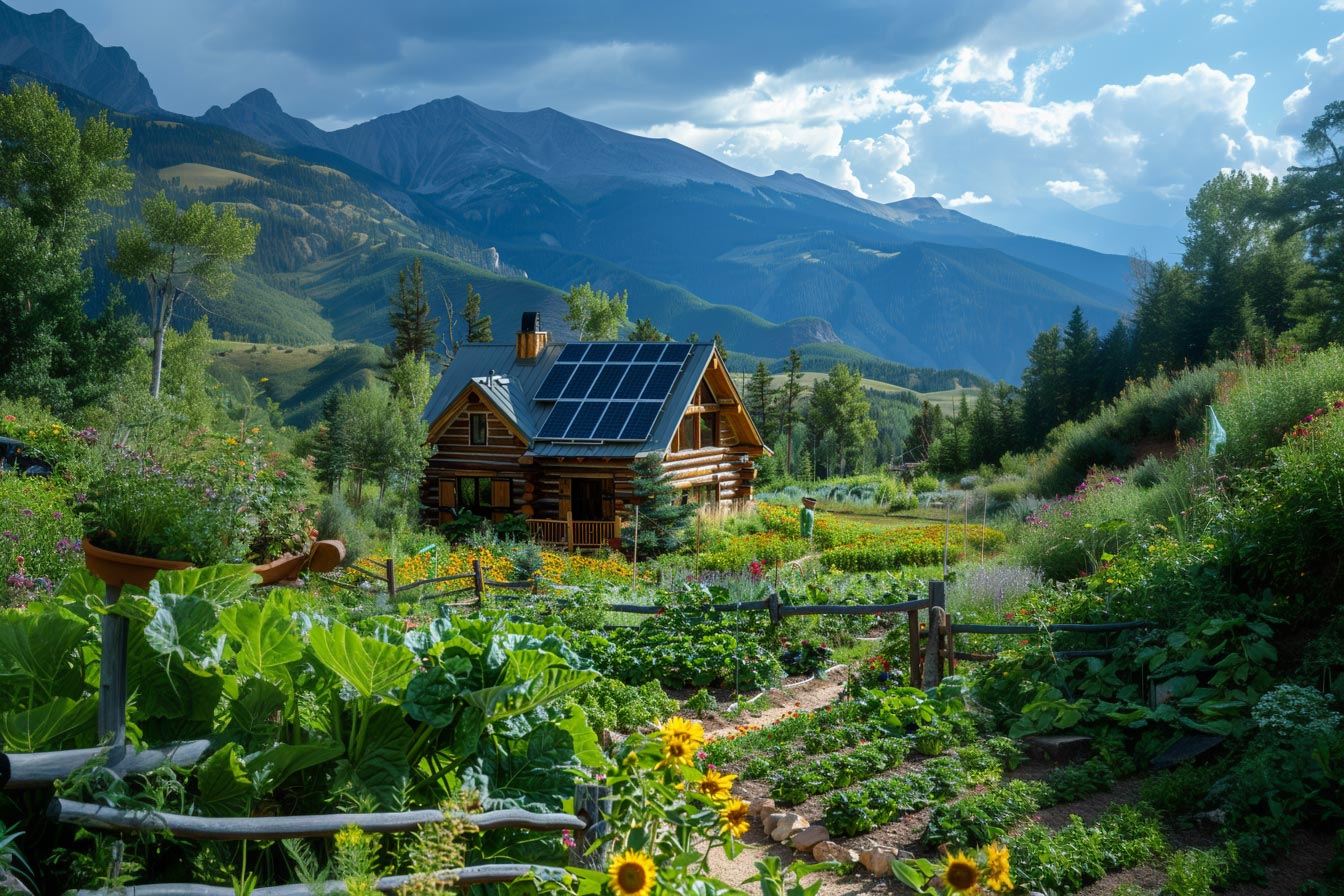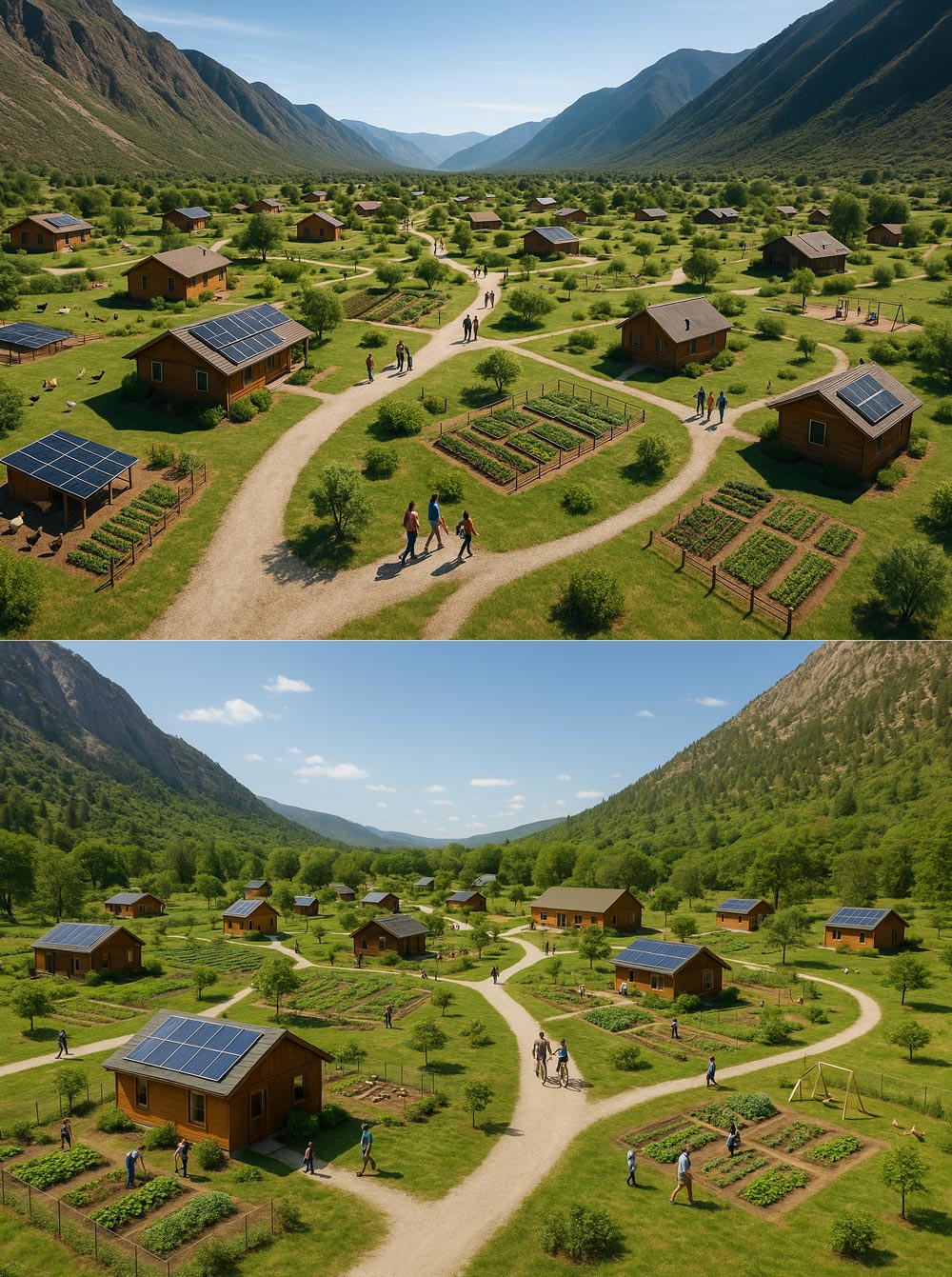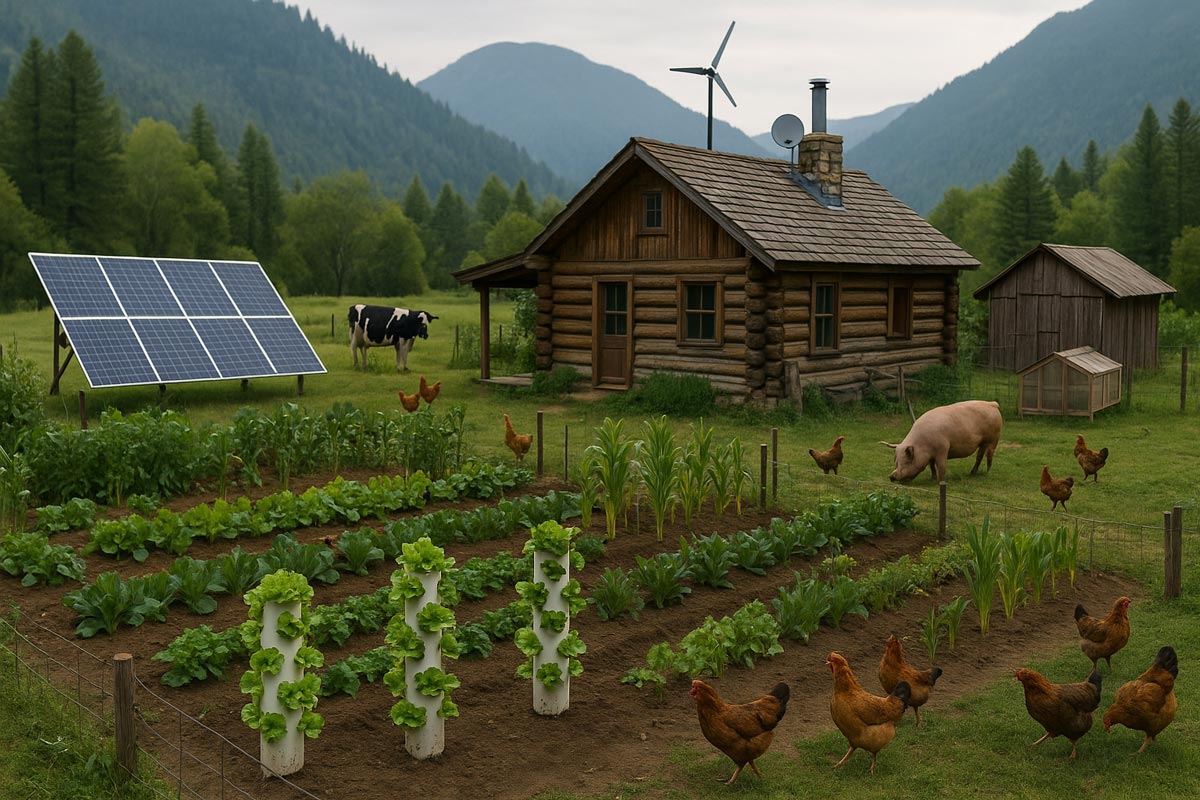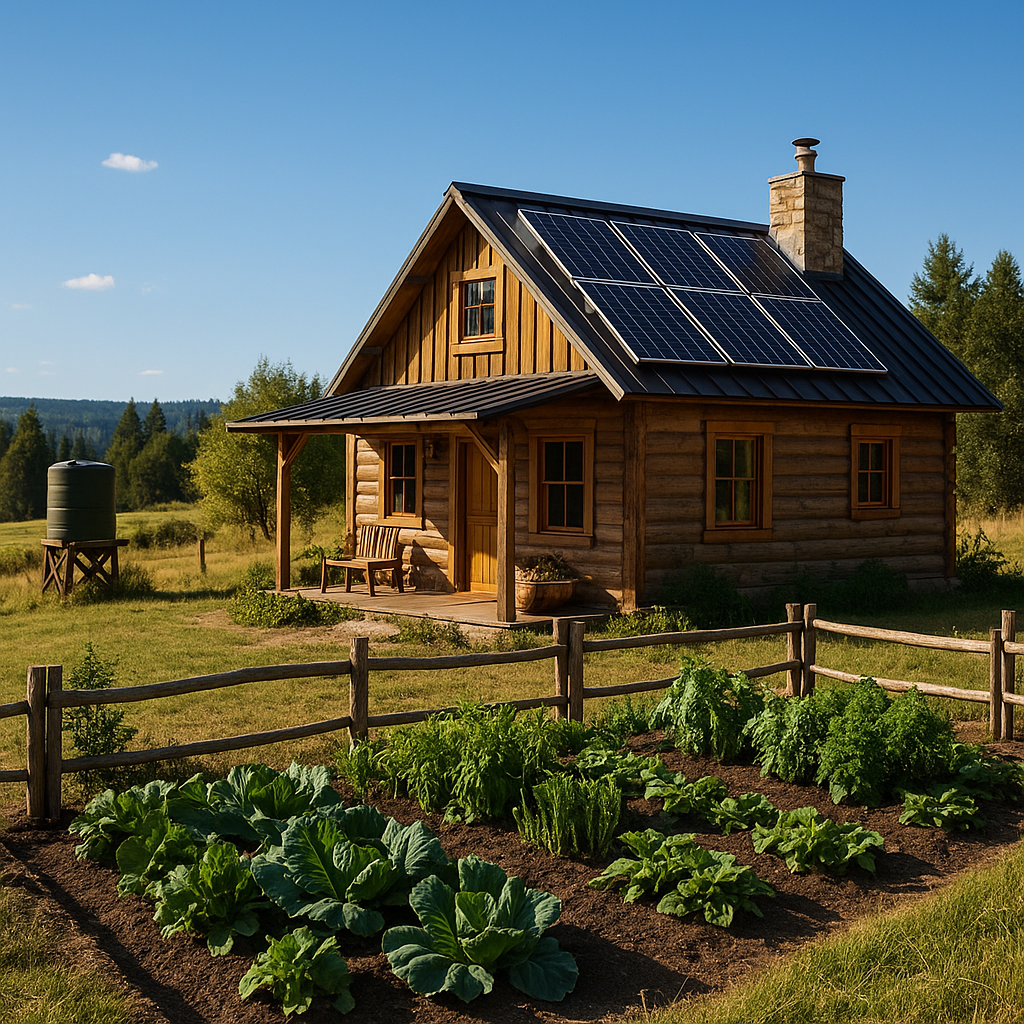Turning Your Off-Grid Farm into a Profitable Business
Starting a business on your off-grid farm or garden can be a rewarding and sustainable way to earn an income while living a self-sufficient lifestyle. By growing produce, fruits, vegetables, and other food items like jellies, jams, and baked goods, you can create a real business by selling at local farmers’ markets and directly to local restaurants and kitchens. This article will guide you through the steps needed to maximize your land’s productivity, calculate usable space, and implement high-yield growing techniques.
The key here is high yield growing, and selling high end produce and “artisan” foods to consumers and high end restaurants in your area and across the world.
Think “Artisan” Products.
The artisan market is massive and people are willing to pay a premium for artisan foods and specialty produce, fruits and veggies.
Turn your off grid property into a sustainable farming goldmine.
Maximizing Your Land: The Numbers
An acre of land is 43,560 square feet. However, not all of this will be usable for growing due to space required for essential living and farm infrastructure. Here’s a breakdown of how you can allocate your land:
- House and Yard:
- House: 1,500 to 2,000 square feet.
- Yard for Kids to Play: 2,000 square feet.
- Pole Barn/Workshop: 1,000 square feet.
Total: 4,500 to 5,000 square feet.
- Green Area (Paths, Green Space, etc.): 3,000 to 5,000 square feet.
- Greenhouse:
- Greenhouse for year-round growing: 500 to 1,000 square feet.
- Fish Pond/Portable Pool for Aquaponics/Hydroponics System:
- Aquaponics System: 500 to 1,000 square feet.
Adding these areas together, the total non-growing area is approximately 8,500 to 12,000 square feet. This leaves about 31,560 to 35,060 square feet available for growing, or roughly 0.72 to 0.80 acres.
High-Yield Growing Techniques
To maximize your output on this land, consider the following methods:
- Vertical Gardening: Vertical gardening allows you to grow more in less space by utilizing vertical space. This is especially useful for small plots of land. Crops like tomatoes, cucumbers, beans, and peas thrive in vertical systems.
- Hydroponics: Growing plants in a nutrient-rich water solution can significantly increase yields while using less space and water. This method is ideal for leafy greens, herbs, and even some fruits like strawberries.
- Aquaponics: Combining fish farming (aquaculture) with hydroponics, this system uses the waste produced by fish to provide nutrients for the plants, while the plants help purify the water. It’s a symbiotic system that can produce both vegetables and fish for market.
- Permaculture Techniques: Focus on creating a self-sustaining ecosystem that mimics nature. Incorporate crop rotation, companion planting, and the use of natural fertilizers and pest control. Permaculture can help increase soil fertility and reduce the need for external inputs.
Growing 6,000 Pounds of Food on 1/10th Acre
As referenced in the article on Off-Grid Living Survival, “How To Grow 6000 Pounds of Food on 1/10th an Acre of Land” it’s possible to grow up to 6,000 pounds of food on just 1/10th of an acre by utilizing these high-yield techniques. Here’s how you can scale this up to your available growing space:
- Vertical Gardens: Can significantly multiply the yield per square foot.
- Hydroponics/Aquaponics: Efficiently uses space and water to grow a large amount of food.
- Greenhouse: Extends your growing season, allowing for year-round production.
With careful planning and the right mix of these techniques, you could potentially produce tens of thousands of pounds of food annually on your off-grid farm, depending on your climate, soil, and the specific crops you choose.
Selling Your Produce: Farmers’ Markets and Local Restaurants
Once you’ve maximized your production, it’s time to sell your goods. Here are some tips:
- Farmers’ Markets: Farmers’ markets are a great way to sell directly to consumers. To succeed, focus on quality, presentation, and building relationships with your customers. Offer samples of your unique products like jams, jellies, or baked goods.
- Local Restaurants: Establishing relationships with local chefs can provide a steady outlet for your produce. Focus on heirloom varieties, organic produce, or specialty items that chefs can’t easily find elsewhere. Consider offering a subscription service or a weekly delivery of fresh produce.
- Value-Added Products: Increase your income by turning some of your produce into value-added products like jams, jellies, pickles, or baked goods. These can command higher prices and have a longer shelf life.
- Online Sales: If feasible, consider selling your produce or value-added products online. This can expand your market beyond your local area.
Energy Independence: Solar and Wind Power
To ensure your farm is truly off-grid, you’ll need to power it with renewable energy. Here’s how to achieve energy independence:
- Solar Panels: Install a solar power system with enough capacity to meet your energy needs. This includes powering your home, greenhouse, aquaponics/hydroponics system, and any other electrical needs.
- Wind Turbines: If your location has sufficient wind, a wind turbine can supplement your solar power, especially during the winter months when sunlight is limited.
- Battery Storage: Invest in a robust battery storage system to store excess energy produced during the day for use at night or during cloudy periods. This ensures a consistent power supply 24/7/365.
- Backup Generator: For additional security, consider a backup generator that can run on biodiesel or another sustainable fuel source.
Turning your off-grid farm into a profitable business is entirely achievable with the right mix of high-yield growing techniques and efficient use of land. By selling your produce, value-added products, and leveraging local markets, you can create a sustainable income while living in harmony with the land. Remember to focus on quality, build strong relationships with your customers, and continuously look for ways to optimize your growing methods. With dedication and smart planning, your off-grid farm can thrive both environmentally and economically.
Revenue projection for your off-grid farm
(based on the growing techniques in the above article)
we’ll start by calculating the potential revenue for different acreages based on the average yields and costs per pound for various types of produce. We will assume the farm is using high-yield growing techniques and is selling a mix of fruits, vegetables, legumes, and potatoes.
The average cost per pound of fresh produce, including fruits, vegetables, legumes, and potatoes, can vary depending on the region, season, and type of produce.
However, as of the most recent data:
- Fruits: The average cost is around $1.50 to $2.50 per pound.
- Vegetables: The average cost is approximately $1.00 to $2.00 per pound.
- Legumes (e.g., beans, lentils): Fresh legumes are less common, but dried legumes typically cost between $1.00 to $1.50 per pound when purchased in bulk. Fresh legumes might be priced similarly to vegetables.
- Potatoes: The average cost is generally around $0.60 to $1.00 per pound.
These prices can fluctuate based on factors such as location, seasonality, and organic versus conventional produce.
Step 1: Estimate Average Yield Per Acre
For simplicity, let’s assume a balanced distribution of produce across fruits, vegetables, legumes, and potatoes. We’ll use conservative estimates of average yields per acre based on intensive farming techniques:
- Fruits: 15,000 pounds per acre
- Vegetables: 20,000 pounds per acre
- Legumes: 5,000 pounds per acre
- Potatoes: 25,000 pounds per acre
Step 2: Calculate Revenue Per Acre
Using the price ranges provided:
- Fruits: Average $2.00 per pound
- Vegetables: Average $1.50 per pound
- Legumes: Average $1.25 per pound
- Potatoes: Average $0.80 per pound
Revenue Calculation Per Acre
Fruits:
- Yield: 15,000 pounds
- Price: $2.00 per pound
- Revenue: 15,000 pounds * $2.00 = $30,000
Vegetables:
- Yield: 20,000 pounds
- Price: $1.50 per pound
- Revenue: 20,000 pounds * $1.50 = $30,000
Legumes:
- Yield: 5,000 pounds
- Price: $1.25 per pound
- Revenue: 5,000 pounds * $1.25 = $6,250
Potatoes:
- Yield: 25,000 pounds
- Price: $0.80 per pound
- Revenue: 25,000 pounds * $0.80 = $20,000
Total Revenue Per Acre:
- Fruits: $30,000
- Vegetables: $30,000
- Legumes: $6,250
- Potatoes: $20,000
Total: $86,250 per acre
Step 3: Calculate Revenue for Different Farm Sizes
Now, we’ll scale the revenue per acre to different farm sizes.
1 Acre Farm
- Total Revenue: $86,250
3 Acre Farm
- Total Revenue: $86,250 * 3 = $258,750
5 Acre Farm
- Total Revenue: $86,250 * 5 = $431,250
10 Acre Farm
- Total Revenue: $86,250 * 10 = $862,500
20 Acre Farm
- Total Revenue: $86,250 * 20 = $1,725,000
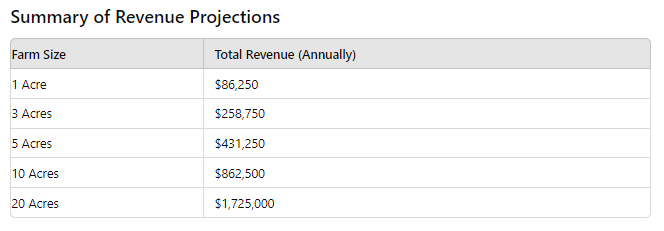
These projections assume optimal growing conditions, high-yield farming techniques, and a balanced mix of produce. Actual revenue can vary depending on factors such as market demand, local prices, labor costs, and unforeseen challenges like pests or extreme weather. Additionally, selling directly to consumers at farmers’ markets or local restaurants might yield higher prices than wholesale, potentially increasing revenue.
Note: These projections assume maximum yield per square foot of growing space and based on actual high yield growing techniques used by The Urban Homestead. Actual results will vary greatly from farm to farm. It also depends on the location, zone, growing season, weather/climate, monetary investment and labor invested into the farm. This information is for educational and informational purposes and is not to be considered investment or legal advice. Basically, use common sense. Most likely you’re not going to make $1.7 million dollars a year farming on your off grid farm.
The possibility exists to do that based on the real numbers and growing techniques from other farms. This article is merely taking all that information and scaling it to it’s absolute maximum to give you an idea of what’s possible IF all conditions are ideal and everything works flawlessly. Which we know is unlikely. Having said that, a conservative estimate would be 25% to 50% of these numbers would be very possible just about anywhere with a good long growing season.
Let’s split it down the middle and call it 33%. That means there’s a real possibility of making between ~$28k to $569k annually on your off grid farm. Again, this depends on your ability, your location, growing season, weather, etc. There are a lot of factors to consider. The point is that it’s possible to do much more with your land than you might think. It’s about opening your mind to new ideas.
It’s not all about making money either. You can simply grow enough food for you and your family and neighbors too if you feel like it. Stockpile food for the zombie apocalypse or another SHTF scenario. The possibilities are only limited by your own imagination and ability.

